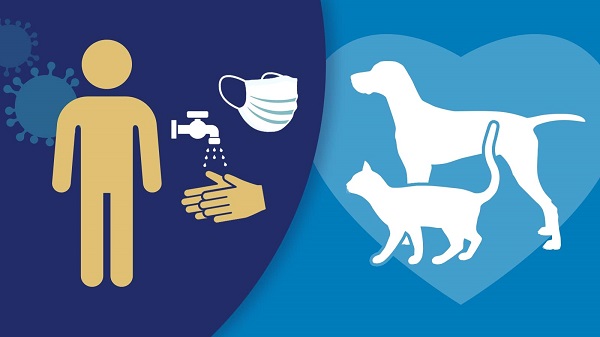Reading: Chủ đề Covid 19 (Phần 2)
Đọc các đoạn văn dưới đây và trả lời 10 câu hỏi trắc nghiệm:
Read the passage given below and answer 10 multiple choices:
Passage:
How Much Do You Really Know About Coronavirus?
1. The newly identified coronavirus has triggered a pandemic of pneumonia-causing disease, not to mention an intense strain on health systems, mayhem on financial markets, a global economic malaise and a surfeit of misinformation. Take this quiz and see if you’re up to date with the prevailing wisdom on Covid-19, its impact on markets and how to stop it.
2. The virus that causes Covid-19 is stable for several hours in tiny floating particles, known as aerosols, and up to two to three days on plastic and stainless steel, U.S. researchers showed. A study published in the New England Journal of Medicine in March, 2020 concluded that the novel coronavirus can survive four hours on copper, 24 hours on cardboard, 48 hours on stainless steel and 72 hours on plastic.
3. A mask should only be worn by health workers, caregivers and individuals with respiratory symptoms such as a fever or cough, according to health authorities. There’s no conclusive evidence masks protect ordinary, healthy people going about their daily business (although a few small studies have suggested that widespread use of face masks by the public may have reduced transmission in outbreaks of other respiratory diseases). With masks in short supply, the argument is that everyone is better off if they are reserved for those who can’t avoid exposure to people who are infected or might be.
4. Because viruses like this one are most efficiently spread via hands, frequent and thorough hand-washing and drying is the best way to minimize the risk of infection. The use of alcohol-based sanitizer is “a good second best,” according to David Powell, a physician and medical adviser to the International Air Transport Association. Other useful measures include avoiding touching your face, coughing or sneezing into the crook of your elbow and disposing of any used tissues carefully.
5. A joint investigation by the World Health Organization and China found that 80% of laboratory-confirmed patients have mild to moderate disease, which may include a mild form of pneumonia. Countries that are testing widely for coronavirus are finding that the number of infected people who show no or delayed symptoms may be greater than previously thought.
6. Typical signs and symptoms include fever, dry cough, fatigue, phlegm or “sputum” production, sore throat and headache. About 14% of cases are severe, causing shortness of breath and difficulty breathing. Critical cases, which account for 6% of patients, experience respiratory failure, septic shock, and/or multiple organ dysfunction or failure.
7. A fomite is an inanimate surface or object, such as a doorknob or utensil, that can transmit infectious organisms. For households with a suspected or confirmed case of infection, the U.S. Centers for Disease Control and Prevention suggest keeping the person separate from others as much as possible and daily cleaning and disinfecting of “high-touch surfaces” in common areas, such as light switches, tables and remotes.
8. The Covid-19 virus can spread via respiratory droplets-spatters of liquid that are sometimes visible to the naked eye-forcefully expelled by an infected person’s cough or sneeze. The particles are usually heavy enough to fall immediately to the ground or surrounding surfaces, which is why the WHO advises staying more than one meter (three feet) away from a person who is sick. It recommends against shaking hands, hugging and kissing for the time being since infection can occur if virus-containing droplets reach the mouth, nose or possibly eye of someone nearby-either directly or via an unwashed hand that’s touched a fomite.
9. Officials want to limit the depth and duration of an anticipated global recession, and they’re employing measures from interest rate cuts to support for companies and households in order to do it. The U.S. is currently grappling with how to finance a $1.3 trillion stimulus package, while the European Central Bank has launched a 750 billion euro ($810 billion) debt-buying program to keep borrowing costs in check.
10. In China, the economy most severely affected by the outbreak so far, the stimulus response has been targeted and relatively modest, with no large-scale spending plans announced. Monetary authorities have injected liquidity into the economy in several operations to support banks.
11. In the U.K., Chancellor Rishi Sunak has said the government will step in to help private companies pay wages to their workers and avoid layoffs, one of the most far-reaching measures yet taken by any Western government. And Japan and South Korea’s central banks have offered to buy billions of dollars’ worth of bonds in unscheduled operations.
12. People of all ages can be infected by the new coronavirus. However, older people and those with medical conditions, such as high blood pressure, diabetes, asthma and cancer, are at greatest risk. Children are among those with the lowest risk of developing severe symptoms, yet emerging evidence suggests that infants and toddlers may also be at risk of severe complications. And data from the U.S. and Europe show young people, from 20-somethings to those in their early 40s, are among those falling seriously ill. Unlike with influenza, Covid-19 doesn’t appear to cause more severe symptoms in pregnant women.
13. There have been at least two instances of dogs being infected, but there is no evidence that a dog, cat or any pet can transmit the novel coronavirus, which is mainly spread through droplets produced when an infected person coughs, sneezes or speaks. The finding that a dog may become infected isn’t all that surprising since the virus is believed to originate in bats - the only flying mammal - and may have crossed the species barrier to humans through another, intermediate mammalian host.

14. The evidence so far indicates the virus can be transmitted in all weather conditions. Seasonal flu tends to flare in winter and recede as spring arrives. But health experts say that it is too early to know whether seasonal changes will affect a different respiratory disease in the same way, although there is some indication it may.
15. A handful of researchers have prepared analyses on the subject, but none has yet been published in scholarly journals. Two research groups concluded that the places where coronavirus infection has mostly taken hold so far - such as Wuhan in central China, Milan and Seattle - similarly share mild humidity and temperatures. Other researchers who examined outbreaks in 100 Chinese cities found that high temperatures and high relative humidity significantly reduce the transmission of the Covid-19 virus. Still other scientists in the U.S. concluded that weather changes alone won’t necessarily reduce the number of cases.
Questions:
1. How long does the novel coronavirus survive outside the body?
A. a week in the air and on surfaces
B. several hours to days
C. up to a two and a half weeks
2. What’s more important for preventing infection?
A. frequent hand-washing
B. wearing a face mask
3. What percentage of people confirmed to have Covid-19 develop mild or moderate symptoms?
A. 14%
B. 40%
C. 80%
4. What are some typical symptoms of Covid-19?
A. fever, dry cough, headache
B. fatigue, cold, hives
C. sore throat, nausea, nosebleed
5. What is a fomite?
A. A hospital-grade disinfectant
B. A contaminated object or surface
C. A disease carrier
D. An immunity-boosting supplement
6. What’s a safe distance to stay apart from someone who’s sick?
A. at least 1 foot (30 cm)
B. at least 3 feet (1 meter)
7. Which government does manage to pay the wages to the employees and prevent layoffs
A. The U.S
B. China
C. Japan
D. The U.K
8. Who’s at highest risk of developing severe Covid-19 disease
A. children and people over 60 years of age
B. pregnant woman and those with existing medical conditions
C. those with existing medical conditions and people over 60 years of age
9. Can pets give a person Covid-19?
A. Yes
B. No
10. Did the scientists in the U.S conclude that the coronavirus may slow with warmer weather?
A. Yes
B. No
Answer key:
1 B (Đoạn 2 dòng 4,5,6)
2 B (Đoạn 3 dòng 3,4 và Đoạn 4 dòng 1,2,3)
3 C (Đoạn 5 dòng 1,2,3)
4 A (Đoạn 6 dòng 1,2)
5 B (Đoạn 7 dòng 1,2)
6 B (Đoạn 8 dòng 4,5)
7 D (Đoạn 11 dòng 1,2)
8 C (Đoạn 12 dòng 2,3)
9 B (Đoạn 13 dòng 1,2)
10 A (Đoạn 15 hai dòng cuối cùng)





-145x100.jpg)





Bình luận